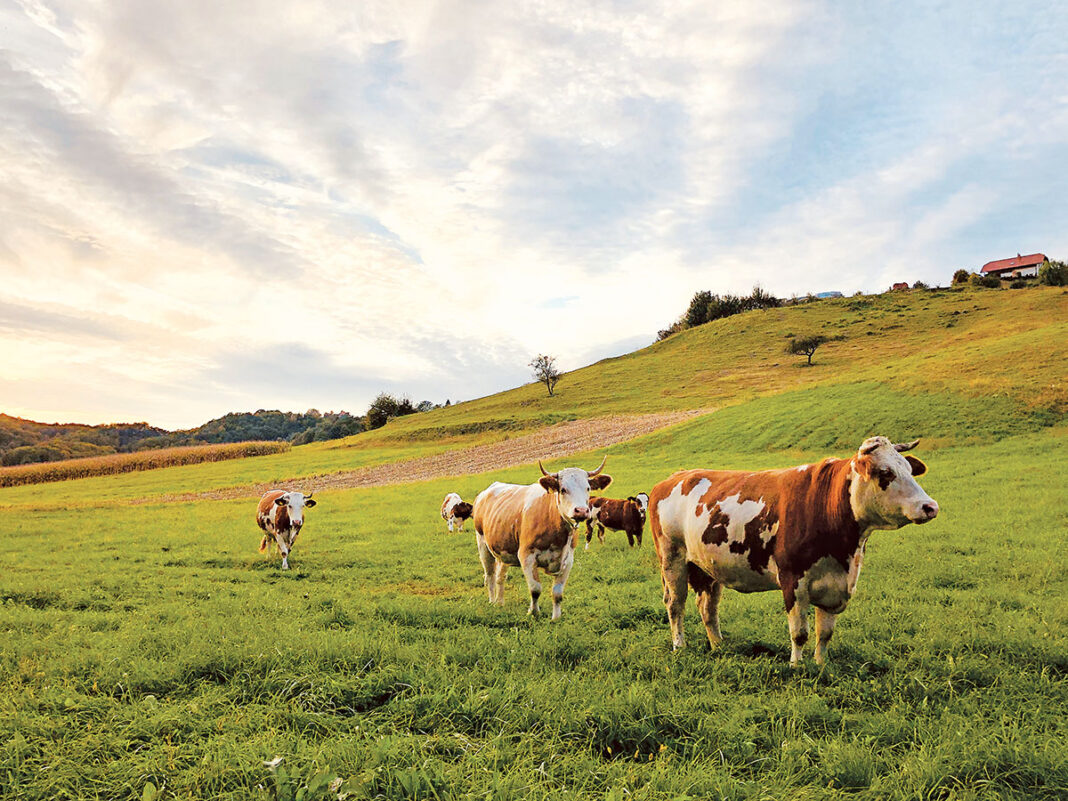After mid April’s national cattle yarding of 55,444 head (54% or 19,000 head above the 2023 weekly average), cattle numbers tightened substantially last week, according to Meat and Livestock Australia.
Cattle yardings reached 36,499 head, firm on the 2022 average.
Despite a shortened selling week, typical weekly volumes were offered last week, demonstrating the continued improvement in supply as the cattle cycle matures.
As expected, the Anzac Day public holiday saw numbers fall sharply.
In anticipation of the public holiday, producers chose to offload larger numbers of stock the week before (in turn driving higher supply).
Evidence of the challenging market environment at present can be seen in the Eastern Young Cattle Indicator’s (EYCI) performance this week.
It closed 14¢ softer than a week ago to finish at 671¢/kg carcase weight
(cwt) and supply halved through the indicator.
This performance is indicative of the broader market.
Sheep Lamb yardings nearly halved last week – 108,000 head were offered for sale, down from 201,000 head the week before.
Meanwhile, mutton volumes fell by 33,000 head to 68,168 head.
It’s expected that numbers will return to the more “normal” pre-April levels.
Supply of sheep and lambs is expected to remain strong well into winter due to the growing flock and improved flexibility of producers to turn-off older, non-performing ewes.
Processor-bought lambs ended the week softer, with heavy and trade lambs softening 10¢ and 16¢/kg cwt respectively.
The heavy lamb indicator ended the week at 689¢ and the trade lamb finished at 684¢/kg cwt, despite a strong sale at Wagga Wagga.
Throughput in both indicators halved, highlighting erratic pricing performance due to shortened selling weeks and sales not running.
The mutton indicator finished firm week-on-week at 436¢/kg cwt, with current prices operating at their highest level since early sales in January 2023.
Month-on-month, this price has risen 90¢ or 26%, suggesting strong demand for this category should translate into robust export volumes heading into winter.
Slaughter Last week’s slaughter results delivered positivity and improvements week-on-week.
Cattle processed rose by 29% or 26,000 head week-on-week to record 114,842 head processed for the week ending Friday, April 21.
However, with the Anzac Day public holiday last week and the Queensland Labour day public holiday this week, numbers are expected to fall again before recovering strongly in May.
Combined sheep and lamb slaughter reached their highest volumes nationally since 2019 at 599,760 head – an increase of 24% week-on-week.
Compared to the corresponding week in 2022, combined slaughter numbers were higher by 198,000 head or 49%.
Goat slaughter also found support and lifted 43% or 12,000 head to record 40,129 head processed.
Compared to the corresponding week in 2022, numbers are higher by 66% or 16,000 head.
These numbers demonstrate the robust supply of goats in the system at present and the pressure this is placing on prices.




